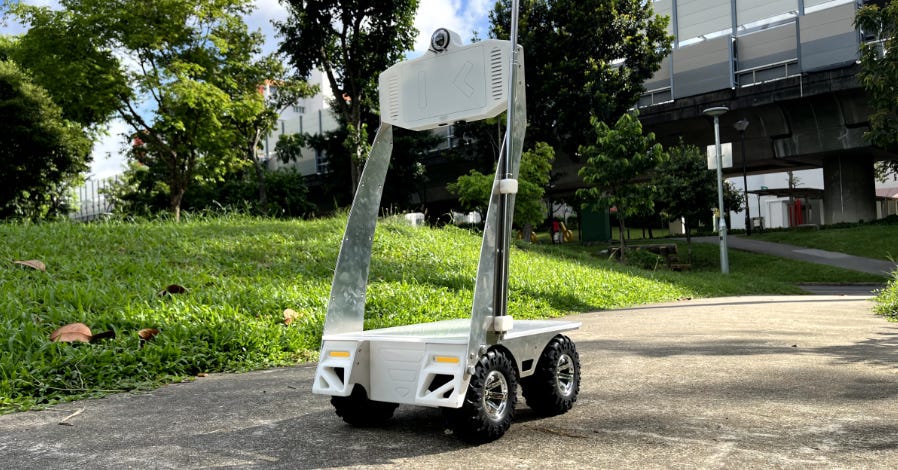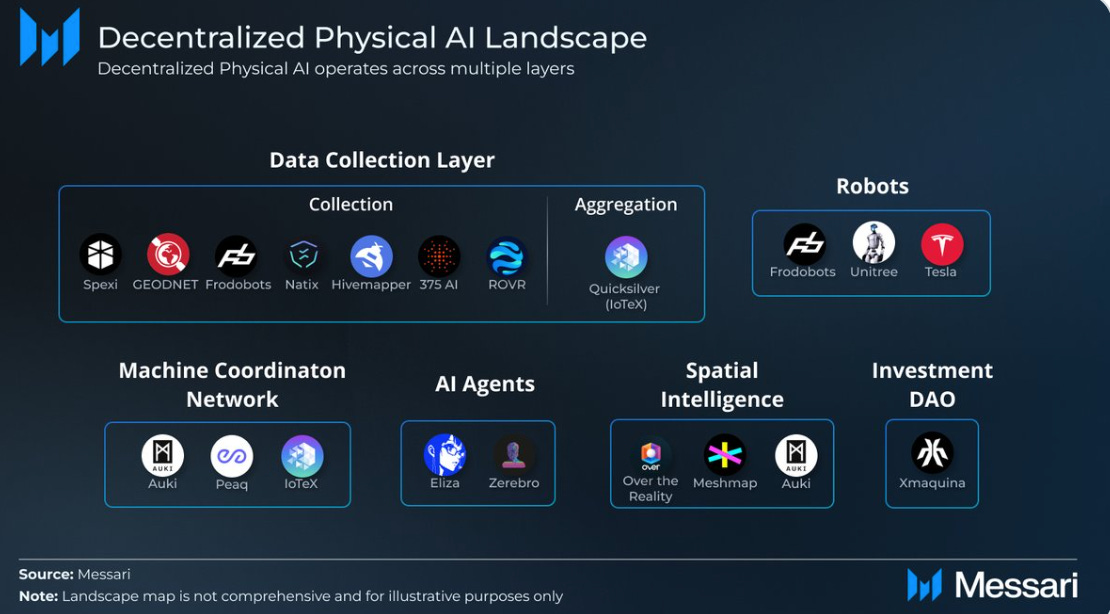Part 2 — Data from the Streets, Not the Cloud
This is the second installment in my ongoing series exploring Decentralized Physical AI (DePAI)—where crypto networks, new devices, and AI converge to build a new, open infrastructure for embodied intelligence.
In my last essay, I highlighted a rare truth about Physical AI—it’s one of the few sectors where crypto networks aren’t fighting to dislodge incumbents. Instead, the challenge is more fundamental: building the entire industry from scratch, beginning with the most essential ingredient—real-world data.
A trillion-dollar opportunity for crypto networks.
Unlike generative AI models like ChatGPT, which are trained on decades of static online data, physical AI learns by interacting with the real world—messy, unpredictable, and constantly changing. Robots need to physically experience the world’s quirks, from slippery floors to chaotic kitchens—things no simulation can fully capture. Teaching a robot to perfectly fry an egg is nothing like generating a recipe; it requires hands-on learning from real-world trial and error.
In Web3, many projects grab headlines by disrupting established industries—Bitcoin bypasses central banks, Ethereum challenges Wall Street, and NFTs reshape the art market. However, Physical AI isn’t about dismantling legacy institutions; it's about building an entirely new industry from scratch.
No better example of this emerging frontier than the race to capture real-world data—a challenge that offers early pioneers the chance to set new benchmarks in Physical AI.
The Data Problem in Physical AI
Consider how a child learns to ride a bike. It’s not enough for them to read about bicycles or view pictures online—they must experience the wobble when the training wheels come off, learn to balance on uneven terrain or understand how to brake on a downhill slope.
Robots operate similarly. They rely on direct, real-world experiences—captured through various sensors—to navigate an environment that is constantly changing. Generative AI models like ChatGPT learn from static online content collected over decades, while physical AI relies on direct real-world experience. Physical AI, by its nature, demands tangible, situational data.
To master tasks such as folding clothes, cooking eggs, or maneuvering around obstacles, robots must gather a diverse array of sensor inputs. For instance, visual data from high-resolution cameras helps them identify objects and distinguish subtle differences—such as differentiating a rock from a shadow.
Depth and range sensors, including LiDAR, ultrasonic, and infrared systems, provide critical information about the distance to nearby objects and help detect obstacles in low-light conditions. Tactile feedback from force and torque sensors is essential for handling delicate tasks, like cracking an egg without breaking its shell or folding fabric without causing damage.
The Challenge of Real-World Data Collection
The need for real-world data is obvious, but collecting it is expensive and painfully slow. Training a household robot, for example, requires fleets of machines, high-end sensors, constant maintenance, and teams of humans to label the data they collect. And because each company gathers data only for its use, the result is a fractured landscape—small, disconnected data pools rather than a shared, open resource that benefits everyone.
This lack of collaboration makes it difficult to compile the massive, diverse datasets that robots need to master real-world tasks, thereby slowing progress across the industry. A fresh approach—such as decentralized networks that share both costs and benefits—could help overcome these bottlenecks and accelerate innovation in Physical AI.
DePIN for Real-World Data Collection
Synthetic data platforms like NVIDIA Omniverse and Comos are useful—but they only work inside clean, controlled simulations. The real world doesn’t play by those rules. A sidewalk can flood overnight. A construction project can block a path. Pedestrians jaywalk. These messy, edge-case moments are exactly what robots need to learn—but they’re the hardest to simulate.
Without real-world data, physical AI will collapse the first time it encounters real unpredictability. The only way to make these systems resilient is to feed them a constant stream of live, messy, unpredictable data from actual environments.
DePINs may offer a solution by incentivizing broad participation and pooling resources. This model not only distributes the cost and effort of data collection but also creates a comprehensive, diverse dataset that can drive innovation in Physical AI.
Frodobots
Enter Frodobots—a protocol combining crypto, robotics, and gaming into one wild experiment. Founded by Michael Cho, Frodobots raised $8 million last month to attack the physical AI data problem head-on.
Rather than relying on expensive, industrial-grade machines, Frodobots builds robots for about $150. This affordability enables widespread deployment across various locations, capturing a broad range of real-world data that is vital for training smarter AI.
What's interesting about their strategy is that they turn data collection into a global game. Instead of simply watching robots work, players are incentivized to remotely operate these machines from anywhere on the planet. Every time a player navigates an obstacle or makes a strategic move, they're not just playing—they're fueling smarter AI through real-world data.
By prioritizing the gathering of diverse data over high-end features, Frodobots ensures that a wide variety of environments and scenarios are captured. When these robots experience failures—such as collisions or getting stuck—these setbacks provide valuable lessons, much like how a driver learns from a near-miss on the road. Each mistake offers crucial feedback that contributes to making the robots better.
Why It Matters
Spreading thousands of low-cost robots across the world creates a data firehose that expensive, centralized fleets could never match. Every unique sidewalk, every obstacle, every unexpected twist feeds the system. It’s the same principle that made Helium a success—decentralized networks of small contributors can cover more ground, faster, and cheaper than any single player ever could.
Everyday failures—like collisions, getting stuck, or running into unexpected problems—offer valuable learning moments. Each mistake provides feedback that helps improve the robots, much like how drivers learn from near-misses. This process allows Frodobots to not only gather diverse data but also learn directly from the messy, unpredictable realities of the physical world, ultimately creating more resilient and adaptable AI models.
Over time, Frodobot’s approach could become crypto’s answer to solving Embodied AI. By turning data collection into an interactive game, the platform builds a decentralized network where every player's action helps train smarter robots. Instead of collecting data to sell to robotics companies, the goal is to continuously improve AI performance by exposing robots to as many real-world scenarios as possible.
Moving Forward
Frodobots is just one of many projects exploring how to build the critical data layer for Physical AI, but it stands out as one of the most creative and ambitious. By selling affordable robots and turning their operation into a global game—where players remotely control machines and complete real-world missions—Frodobots combines elements of Pokémon Go, Helium, and frontier robotics into something entirely new. This fusion of gaming, decentralized participation, and physical data collection represents not just a novel product, but the potential birth of a whole new category in crypto.
As discussed earlier, this real-world data layer is one of the rare sectors in the crypto economy with no entrenched incumbents—and a clear, unsolved problem that distributed systems are well suited to address. With demand for fresh, real-world data only set to grow in the coming years, the projects that crack this challenge won’t just unlock valuable new datasets—they could shape how the next generation of intelligent machines learns to move through the physical world.
For anyone tracking where the future of AI, crypto, and robotics intersect, this is a space you can’t afford to ignore.


